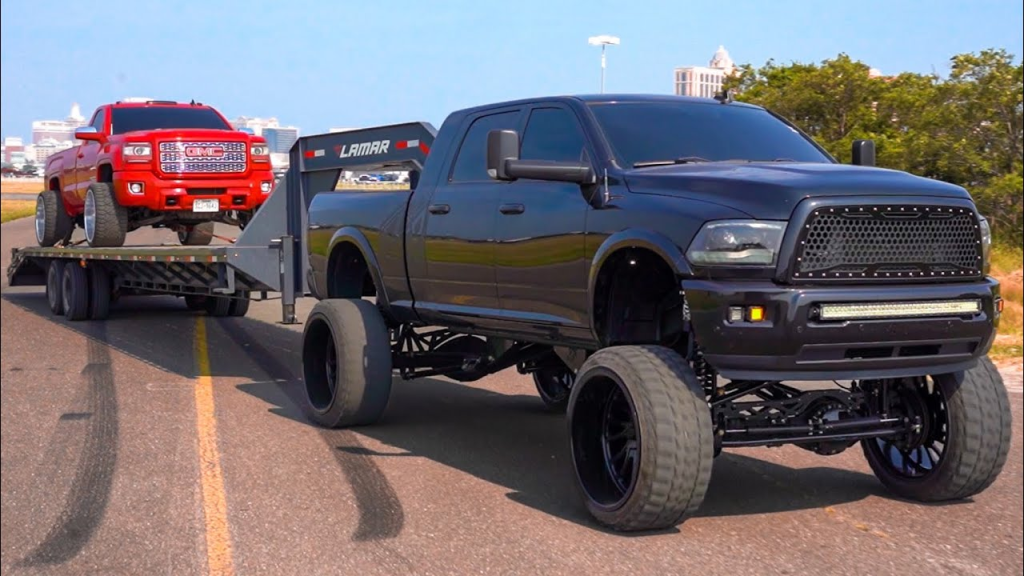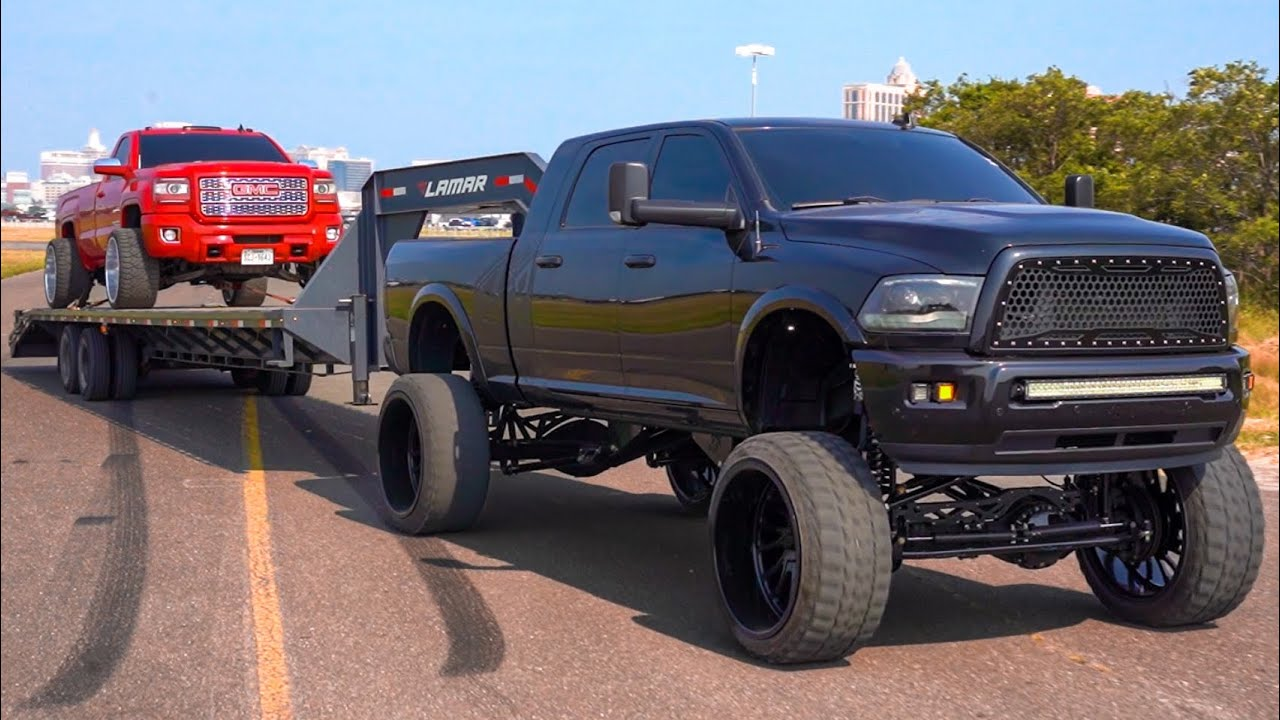Introduction
If you own a lifted truck and need to tow heavy loads, understanding how to operate a Lifted Truck With Gooseneck Trailer is essential. Standard trailers may not align correctly with lifted trucks, causing sway, instability, or unsafe towing conditions. With the right setup and knowledge, you can haul safely, efficiently, and confidently.

What Is a Lifted Truck With Gooseneck Trailer?
People Also Ask: What makes a lifted truck with a gooseneck trailer different?
A Lifted Truck With Gooseneck Trailer refers to a high-clearance pickup truck towing a trailer connected via a gooseneck hitch in the truck bed. Unlike bumper-pull trailers, gooseneck trailers distribute weight directly over the rear axle, enhancing stability, reducing sway, and improving load handling.
Read too: Franklin Truck Parts Near Me: Your Complete Guide to Local Truck Parts & Repair Solutions
Key Benefits:
- Enhanced towing stability
- Greater payload capacity
- Improved turning radius compared to bumper-pull trailers
- Adjustable compatibility for lifted trucks
According to the Trailer Safety Association, trucks towing gooseneck trailers report up to 25% less sway and 15% more stable braking than conventional hitch setups.
Why Lifted Truck Owners Prefer Gooseneck Trailers
People Also Ask: Why is a gooseneck trailer ideal for lifted trucks?
Lifted trucks increase vehicle height and center of gravity. Standard trailers may cause unsafe angles or reduced towing efficiency. A gooseneck trailer:
- Aligns correctly with the truck bed for improved safety
- Supports heavier loads without overstraining suspension
- Allows for smoother operation on uneven terrain
- Reduces wear on the truck’s frame and hitch
Advantages vs Disadvantages:
| Advantages | Disadvantages |
|---|---|
| Better stability | Higher upfront cost |
| Handles heavier loads | Requires proper hitch installation |
| Reduced sway | May need height adjustment |
| Ideal for lifted trucks | Slightly more complex hookup |
How to Choose the Right Gooseneck Trailer
People Also Ask: What should I consider when buying a gooseneck trailer for a lifted truck?
- Trailer Height & Clearance: Ensure it matches the truck’s lift to prevent hitch misalignment.
- Payload Capacity: Verify it can handle your heaviest loads safely.
- Axle Configuration: Tandem axles for moderate loads; triple axles for extremely heavy cargo.
- Material & Construction: Steel offers durability; aluminum is lighter but costlier.
- Brake System: Hydraulic or electric brakes improve towing safety.
For additional technical insights, see Wikipedia on Trailers.
Step-by-Step Guide to Hooking Up Your Trailer
- Position the Truck: Align the gooseneck ball under the trailer coupler.
- Secure Coupler: Lock onto the hitch ball and double-check tightness.
- Attach Safety Chains: Connect to designated points for extra security.
- Connect Brake & Lights: Ensure electrical systems are properly linked.
- Test Towing: Drive slowly to verify stability before traveling at normal speed.
Pro Tip: Measure the clearance between truck bed and trailer to ensure proper fit with lifted suspension.
Maintenance Tips for Long-Term Use
People Also Ask: How do I maintain a gooseneck trailer for a lifted truck?
- Weekly: Check tires, lights, and hitch connections.
- Monthly: Inspect wheel bearings, lubrication, and brakes.
- Annually: Examine frame, cross-members, and welds for cracks or rust.
- Pre-Tow: Always inspect for damage, and ensure trailer is level and secured.
Regular maintenance extends trailer life, improves safety, and reduces costly repairs.
Common Applications
A lifted truck with a gooseneck trailer can handle:
- Transporting heavy machinery or construction equipment
- Hauling multiple vehicles or recreational ATVs
- Moving boats, RVs, or trailers
- Commercial cargo and farming equipment
Its versatility makes it essential for contractors, farmers, and off-road enthusiasts alike.
FAQ Section
Q1: Can any lifted truck tow a gooseneck trailer?
A1: Most lifted trucks can tow if the hitch and suspension are rated appropriately. Always check manufacturer specifications.
Q2: Do I need a special hitch for lifted trucks?
A2: Yes, a gooseneck hitch compatible with the truck’s lifted height ensures safe towing.
Q3: Are gooseneck trailers safer than bumper-pull trailers?
A3: Yes, due to improved weight distribution and reduced sway.
Q4: How do I adjust a trailer for a lifted truck?
A4: Use adjustable hitch plates or drop-leg extensions to match the trailer height with the truck bed.
Q5: Can I haul heavy equipment with a lifted truck safely?
A5: Yes, as long as the trailer and hitch are rated for the intended load.
Conclusion
A Lifted Truck With Gooseneck Trailer setup maximizes towing safety, stability, and payload capacity. By choosing the right trailer, following proper hookup steps, and maintaining both truck and trailer regularly, operators can haul efficiently and confidently. Share this guide with fellow enthusiasts to help them tow smarter and safer!

Leave a Reply